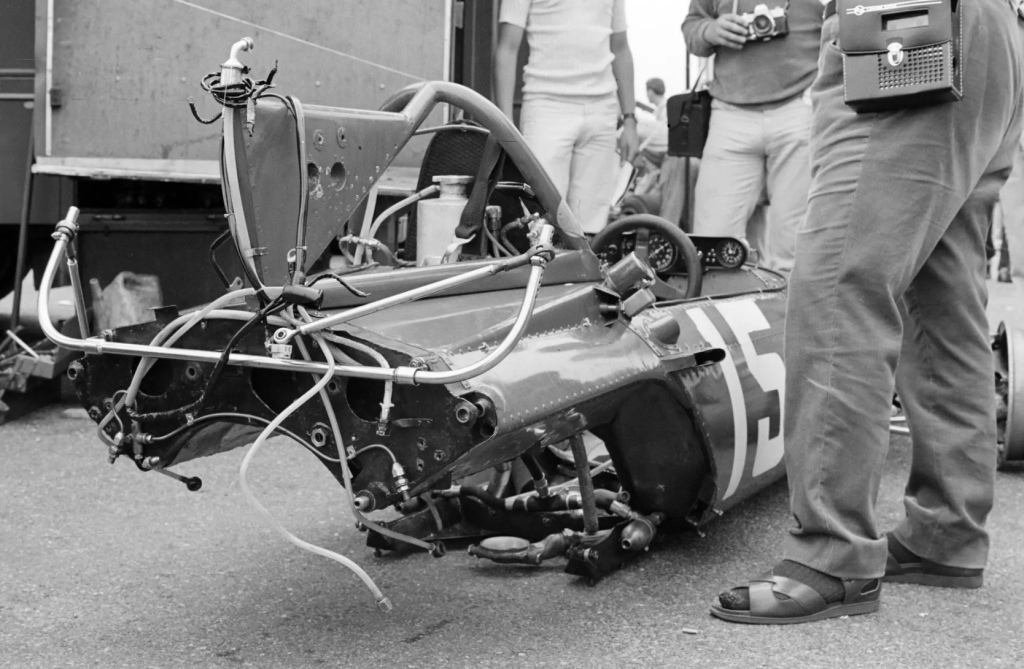
One of my true racing loves is the 1970 F1 Ferrari 312B and its successors.
I’ve done it to death of course, this article tells its story in detail: https://primotipo.com/2016/02/26/life-is-all-about-timing-chris-amon-and-the-ferrari-312b/ But this series of shots of an engine change during practice in Clay Regazzoni’s 312B/001 during the 1970 German GP weekend at the Hockenheim Motordrom are too good to ignore. We’ll make this the first of a similar series of a largely pictorial nature.
Doug Nye characterises this Mauro Forghieri – and team – designed machine as one the best integrated F1 Ferraris. The photographs here convey clearly why this is so.
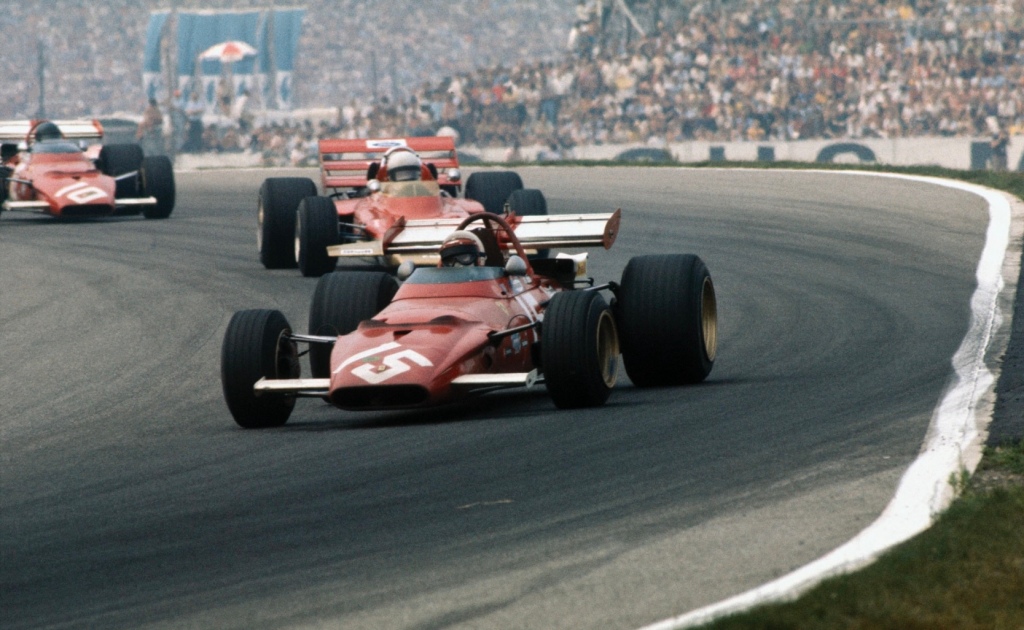
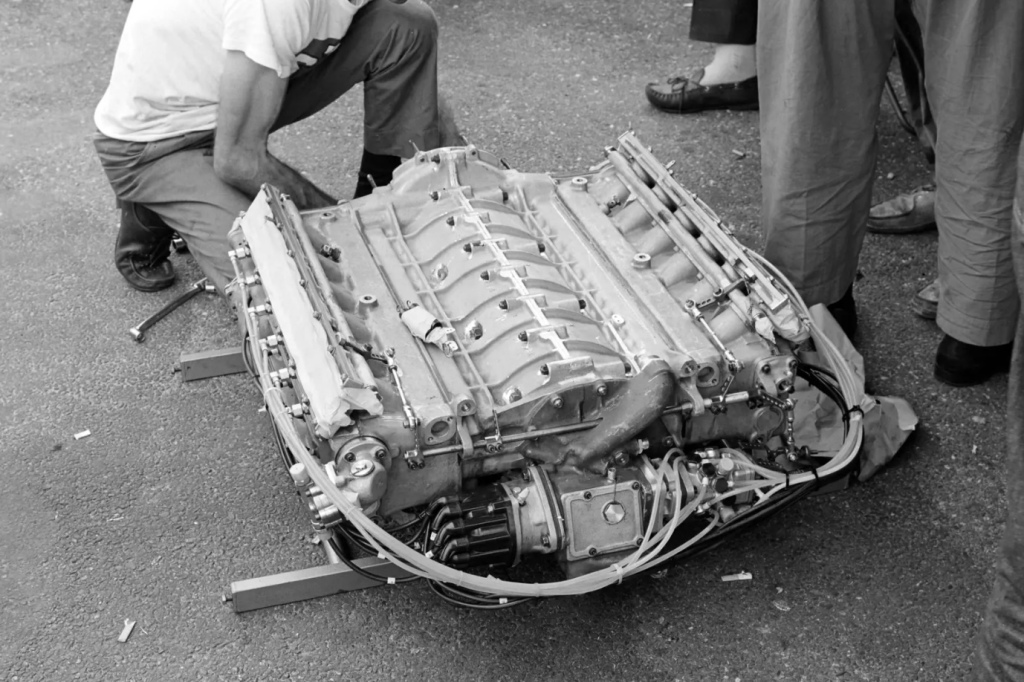
The four main-bearing twelve cylinder engine – a Flat-12 or 180-degree V12 – depending upon your engineering religion of choice – was a paragon of reliable power after the early challenges experienced largely by Chris Amon circa-September 1969 were overcome.
These shots show how low, wide and compact it was. All that weight sat low in the chassis with the wild monocoque carrying the engine ‘underslung’. At that early stage of its development, Ferrari quote an output of 450bhp @ 12000rpm, a capacity of 2991.01cc and bore/stroke of 78.5×51.5mm.
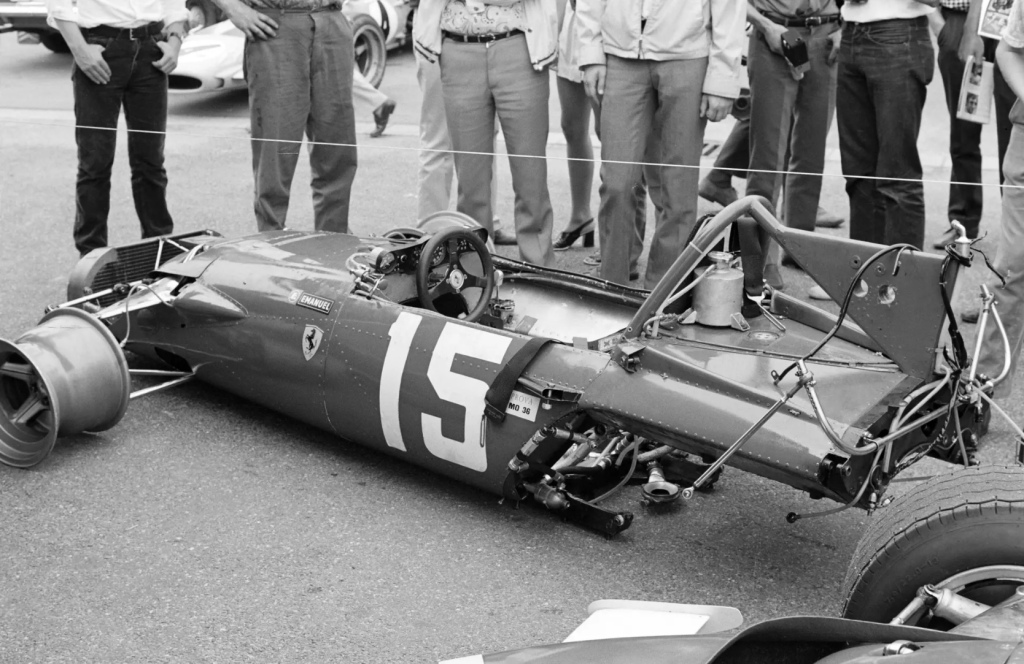
Devoid of tyres, Regga’s #312B/001 sits on its tummy.
Note the inboard rocker front suspension – Ferrari had used this set up continually since the 1963 156 Aero – and clever way in which the aero-element rollbar stay ‘triangulates’ the monocoque boom. Oh to have been there to watch the engine replacement!
Ferrari still used their ‘Aero semi-monocoque’ at this stage, in that the tubular steel chassis had aluminium panels riveted to it with the engine used as a semi-stressed member.
Five of these chassis were built: 312B/001 – #312B/004 albeit #312B/002 was re-tubbed after Jacky Ickx’ collision with Jack Oliver’s BRM P153 during the 1970 Spanish GP. All four cars exist, what lucky owners they are! See oldracingcars.com for chassis by chassis details: https://www.oldracingcars.com/ferrari/312b/
#312B/001 was Ickx’ usual chassis throughout that season: the Austrian, Canadian and Mexican GP winner. As the chassis number suggests, this machine was the first built. It was entered for Chris Amon in the 1969 Italian Grand Prix but failed to take to the track after engine failure in three test sessions at Modena in the lead up to Monza.
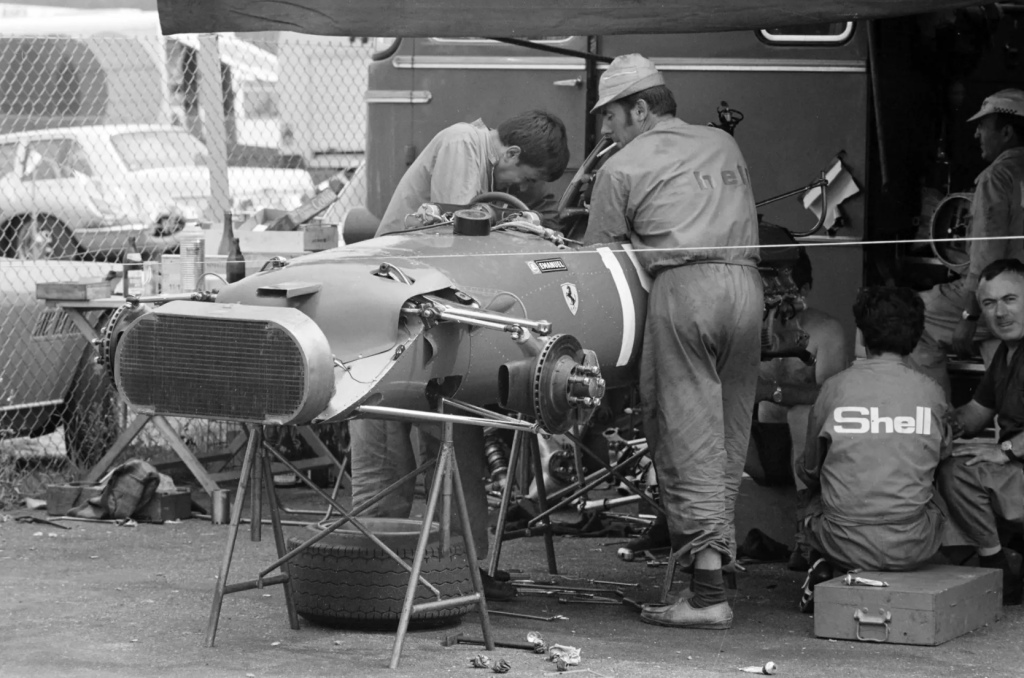
Jochen Rindt won the Hockenheim race that weekend during the mid-season run of victories – the Dutch, French, British and German GPs – that gave the fearless Austrian enough points to win the World Drivers Championship posthumously. With a little more luck it could have been Jacky Ickx, but karma, thankfully prevailed.
In Germany the top-three qualifiers were Ickx, Rindt and Regazzoni. While the Ferrari challenge was strong, newcomer Regga – who won the Italian GP in September – led laps 22 and 23 of the race and was then slowed and retired with gearbox trouble in the 50 laps race.
Rindt’s win from Ickx was a good one, Denis Jenkinson noted in MotorSport that “As was very evident in Zandvoort it was the Lotus 72 showing superiority over the other competitors, rather than the driver…he (Rindt) won by only 0.7 sec from Ickx but the win was convincing as he was able to pass the Ferrari whenever he wished…”
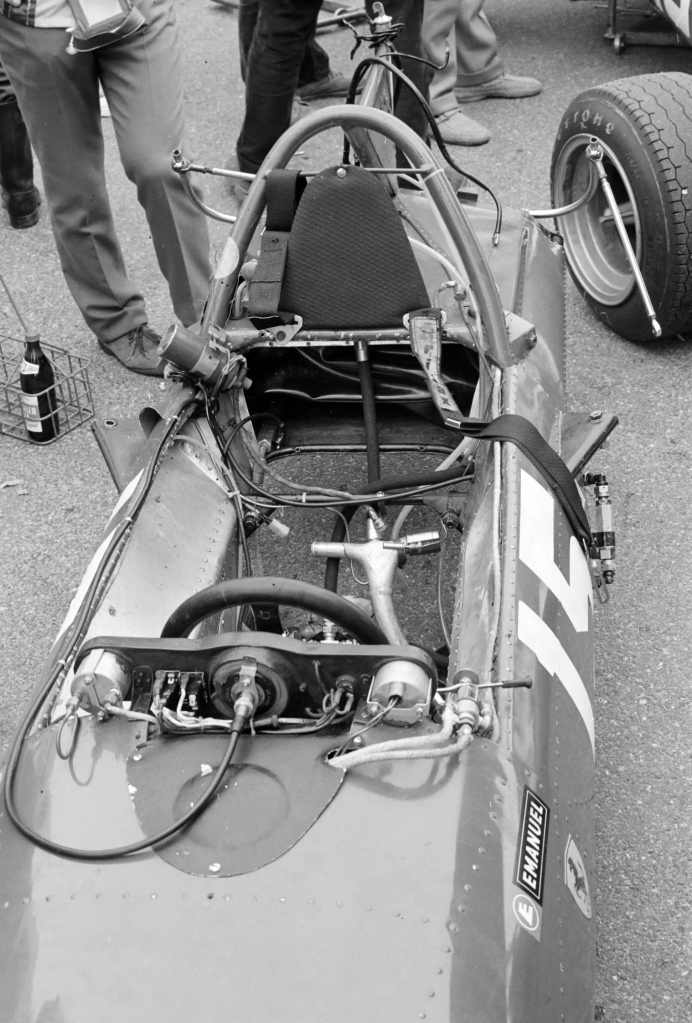
More often than not the floor is a key contributor to the structural rigidity of both spaceframe and monocoque chassis – glued and riveted as they often are – but apparently not so much with this Ferrari, the floor of which was seemingly located by removable bolts. There are rubber fuel-bags within the monocoque on each side, mandated by the FIA from 1970.
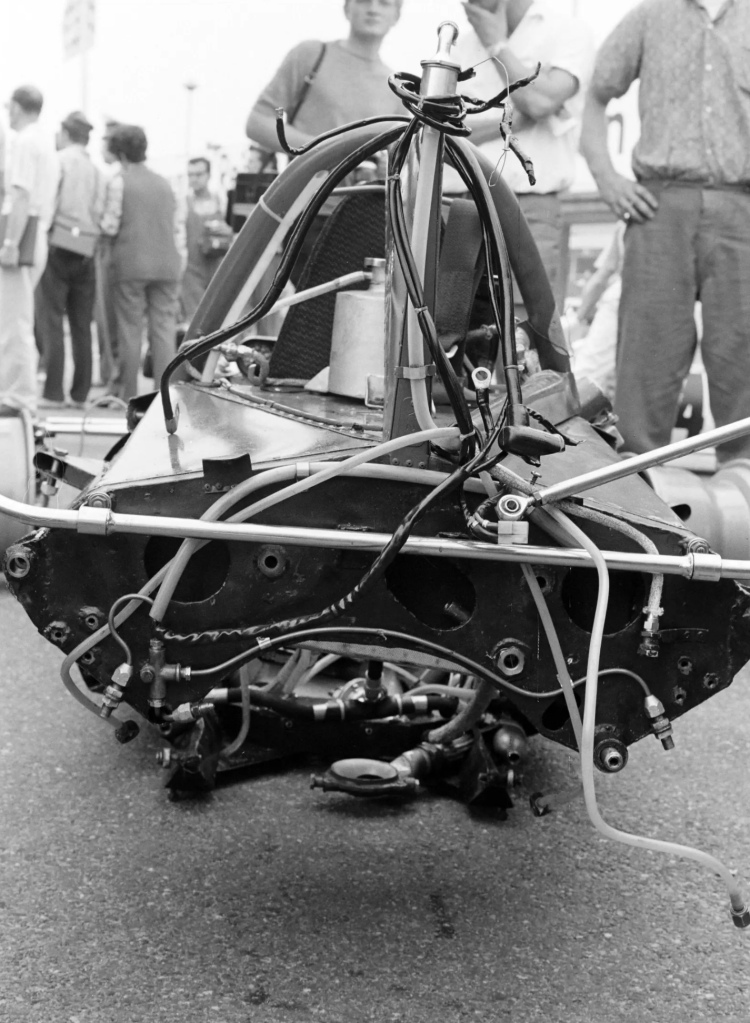
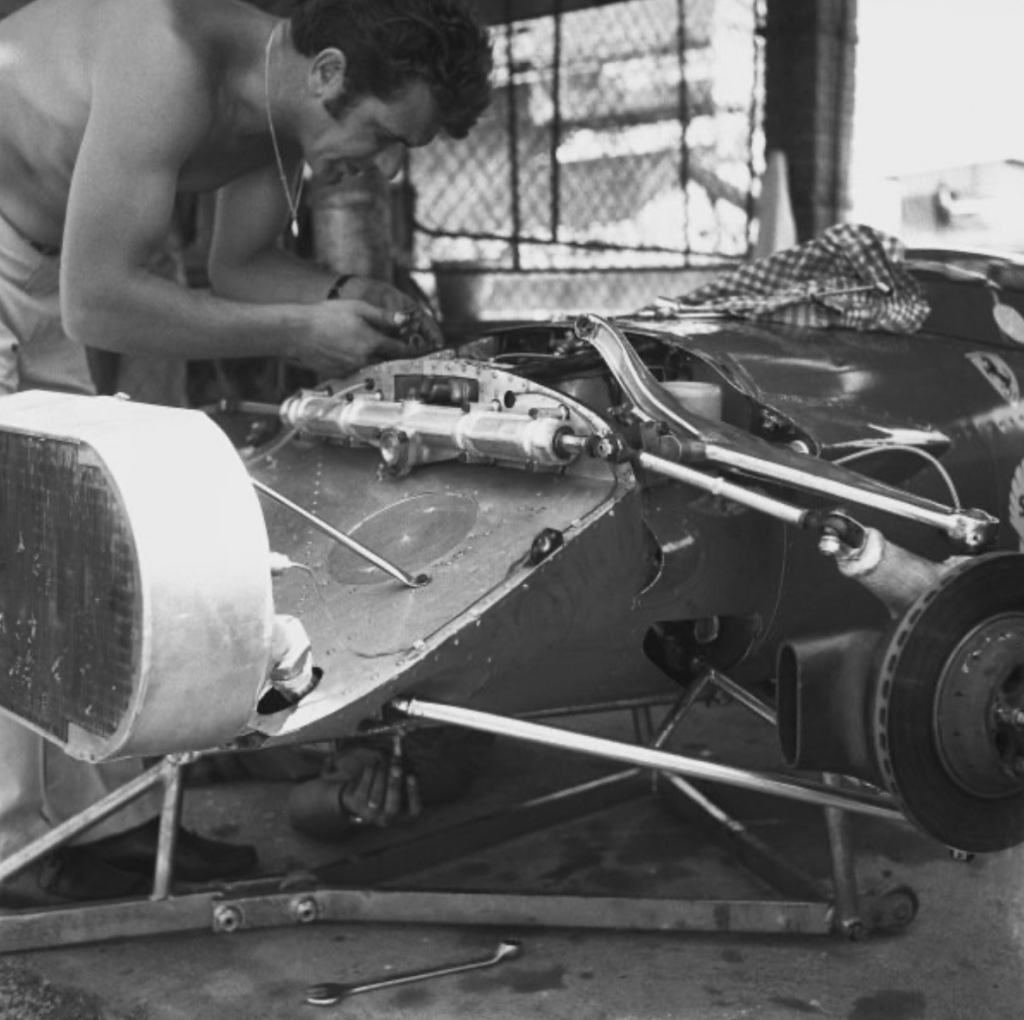
Front suspension long top rocker and wide based lower wishbone, steering rack and steering arm mounting ‘ear’ on the upright on one of the 312Bs at Kyalami during the 1970 South African GP weekend.
Credits…
LAT Images, oldracingcars.com, Ferrari.com
Tailpiece…

Is Borsari the mechanic? I know the face of the longtime Scuderia man, I’m just not so sure of the name. Look how Forghieri is shifting weight to the very rear of the car: the Varley battery and neatly faired oil radiators. Outboard rear suspension is period-typical: cast magnesium uprights, single top links, inverted lower wishbones and twin radius rods, plus coil-spring/Koni dampers.
Finito…
MarkYes it’s the late Guilio BorsariHe started as a mechanic for Officine Maserati in the early 50s, then Scuderia Centro Sud , moving to Ferrari in 1962 . He became chief mechanic for the team in 1964 retiring in 1979 having worked with some great drivers. He passed away in 2013 aged 88. David
Sent from the all-new AOL app for iOS